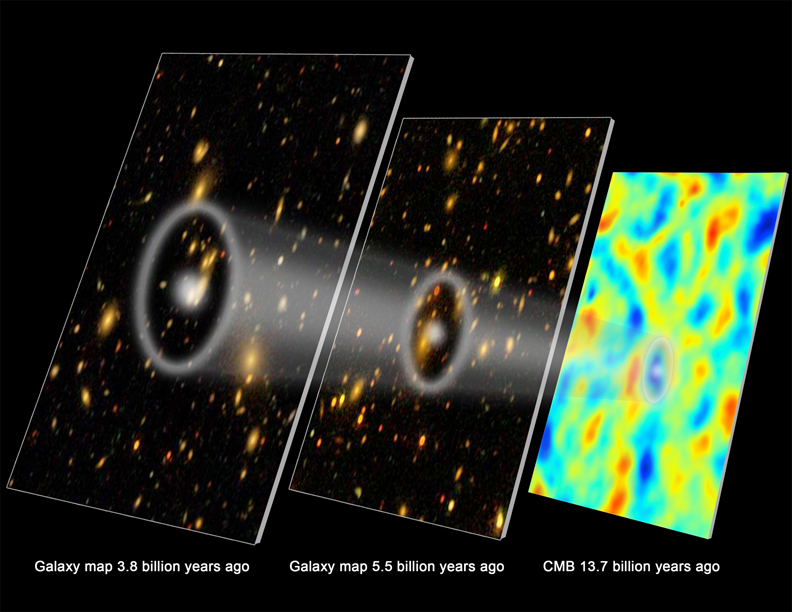Image List
-

The record of baryon acoustic oscillations (white circles) in galaxy maps helps astronomers retrace the history of the expanding universe. These schematic images show the universe at three different times. The representative-color image on the right shows the "cosmic microwave background," a record of what the very young universe looked like 13.7 billion years ago. The small density variations present then have grown into the clusters, walls, and filaments of galaxies that we see today. These variations included the signal of the original baryon acoustic oscillations (white circle, right). As the universe has expanded (middle and left), evidence of the baryon oscillations has remained, visible in a "peak separation" between galaxies (the larger white circles). The SDSS-III results announced today (middle) are for galaxies 5.5 billion light-years distant, at the time when dark energy turned on. Comparing them with previous results from galaxies 3.8 billion light-years away (left) measures how the universe has expanded with time.
E.M. Huff, the SDSS-III team, and the South Pole Telescope team. Graphic by Zosia Rostomian